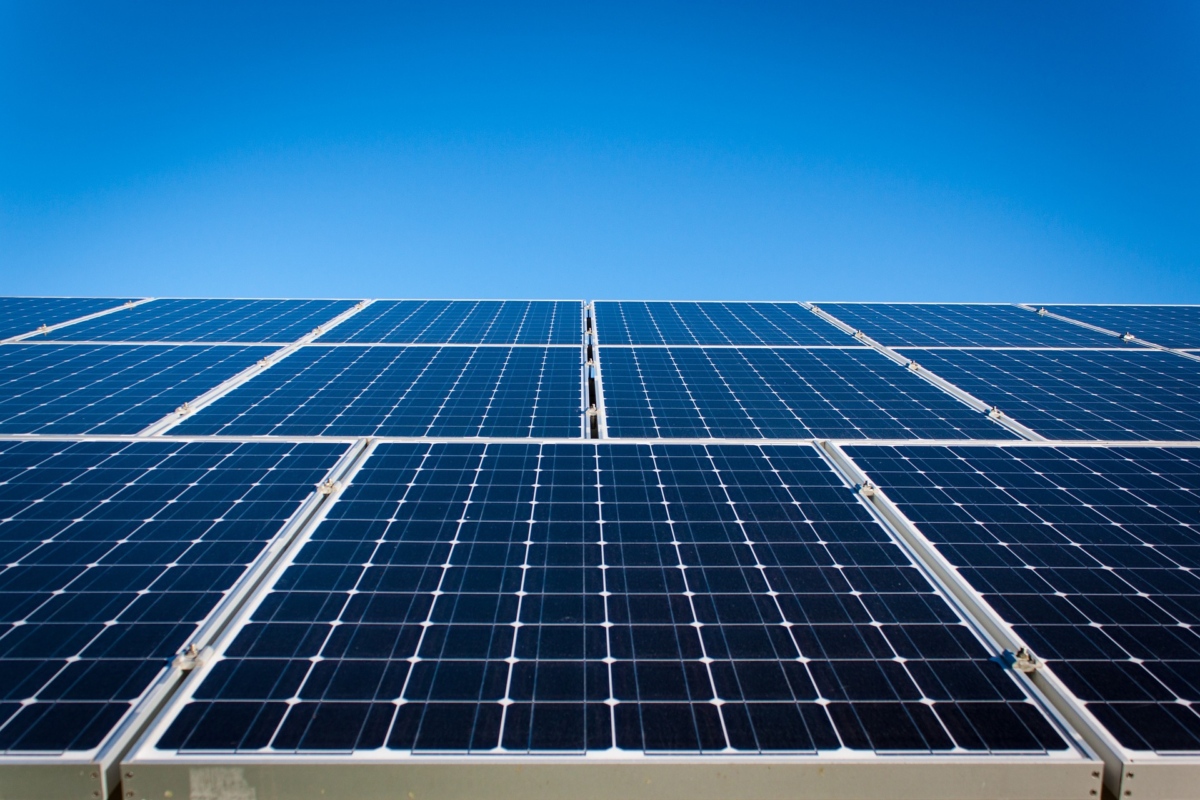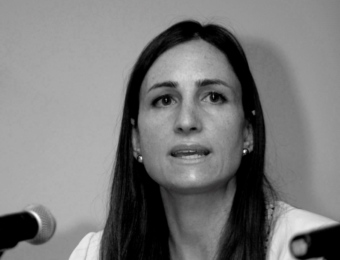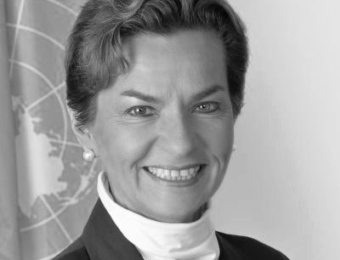
Energy Transition & Climate
The Inter-American Dialogue’s Energy Transition & Climate Program aims to accelerate a just energy transition and expand access to clean, secure, and affordable energy in the Western Hemisphere. By convening experts, policymakers, corporate leaders, and civil society to share balanced, innovative, action-oriented analysis, and best practices, the program aims to enhance energy security, mitigation, adaptation, and resilience to the climate crisis in line with the objectives and timeline of the Paris Agreement and Sustainable Development Goals.
EventsArray
(
[0] => WP_Post Object
(
[ID] => 143859
[post_author] => 128
[post_date] => 2024-01-05 20:31:18
[post_date_gmt] => 2024-01-05 20:31:18
[post_content] => Tropical forests, which cover 6 percent of Earth, are our planet’s largest natural carbon sink and our first line of defense against climate change. Even with massive human effort at reducing emissions, reaching the 1.5-degree target is not possible without forest restoration.
Latin America and the Caribbean (LAC), whose forests hold 34 percent of global carbon mitigation potential, offer unique environmental and economic opportunities presently undermined by weak policies. In the past fifty years, 17 to 20 percent of the Amazon has been destroyed, making the Agriculture, Forestry, and Other Land Use (AFOLU) sector the top sectoral emitter (40 percent) in LAC. However, reforesting 20 million hectares could result in significant carbon sequestration, balance ecosystem service and biodiversity conservation, and yield US$23 billions in net benefits over 50 years. LAC must thus act quickly to safeguard biodiversity and secure forests’ potential as buffers against the climate crisis. Otherwise, the region will miss a critical opportunity to leverage its unique natural potential to tackle climate change while promoting sustainable productive activities. The analysis below presents the case of deforestation in Brazil and Colombia. It then proposes structural changes and policy recommendations to reverse deforestation, highlighting Costa Rica’s success as a regional example. It also touches on relevant discussions held during COP28 regarding legal improvements for halting deforestation.
Deforestation trends in Brazil and Colombia
Brazil and Colombia are among the five countries globally with both the largest tropical forests and the highest cost-effective mitigation potential from forest protection measures. As recognized by Lula and Petro during COP28, their ambitious goals under the Paris Agreement will require structural improvements beyond the initiatives for reducing carbon emissions from deforestation and forest degradation (REDD+).
Brazil’s successful forest strategy from 2004 to 2014 revolved around forest conservation policies and stronger monitoring and enforcement mechanisms. However, since 2014, deforestation increased due to weakened environmental institutions, changes in the land law, and subsidies to cattle ranching. This trend jeopardizes the value of the Brazilian rainforest, which is estimated at a total value of US$317 billion per year by the World Bank.
In Colombia, deforestation peaked after the 2016 peace agreement with FARC in response to the lack of governmental presence and economic opportunities. As a result, the US$18.1 billions per year in natural capital was lost in 2021 the Colombian Amazon Basin due to deforestation.
Critical policy to promote forest restoration and management
At the macro level, countries’ top priorities should be implementing more stringent forest protection policies, improving effective forest law enforcement, and monitoring at the national, regional, and local levels. Also urgent are efforts to strengthen land governance, such as by eradicating land grabbing through modernized land registration and livestock tracing systems.
Brazil and Colombia are aware of this need. During COP28, Lula and Petro discussed their aggressive efforts to protect forests and slash deforestation rates, claiming their governments have cut deforestation rates by 50 percent and 69 percent, respectively, yet upcoming drought periods threaten to unravel these successful trends. Significantly, Lula proposed a fund called the “Tropical Forests Forever Fund” at COP to finance forest conservation in 80 countries via sovereign wealth funds and private investors. While a salient idea, Brazilian and Colombian forest protection policies remain key.
Two specific policy tools to stymie deforestation are clear carbon market regulations and better Payments for Environmental Services (PES) schemes. First, a robust institutional and regulatory framework that monitors and verifies carbon credits to avoid double counting and guarantee additionality is vital. Second, effective carbon offset strategies must benefit locals through PES, as monetarily incentivizing farmers and ranchers to transition their land into forest area is critical.
Some progress on carbon markets has been made in both Colombia and Brazil. In Colombia, a carbon tax with an offset component is in place, and an emissions trading system is still in the development phase. Law 1931 of 2018 created a national cap and trade system (Programa Nacional de Cupos Transables de Emisión de Gases de Efecto Invernadero, PNCTE). Although implementation studies have been conducted, regulations are still under design and political support is limited.
In Brazil, a bill aiming to regulate the carbon market that was presented in October 2023 is now under review by Congress. The proposed legislation would establish a cap and trade system for operators emitting over 25,000 tons of CO2e per year (except for agricultural production) and a complementary voluntary market.
Internationally, there were high hopes that COP28 would design a new mechanism under Article 6.4. of the Paris Agreement that would enable countries to sell offsets to other governments, companies, and individuals. However, disagreement between the European Union (EU) and the United States led to failure on setting the rules needed to trade offsets bilaterally. On the one hand, the United States was pushing for a less strict regulation, while the EU, supported by Latin American and African nations, advocated for stronger environmental and human rights guardrails. Negotiators expect to try for a deal again at COP29.
Strategy two, PES, incentivizes forest conservation by offering an alternative income to those deforesting for grazing, agriculture, illegal mining, and other activities. Although Brazil and Colombia have implemented these schemes, in most cases they lack both social and environmental safeguards and lack verification, transparency, and monitoring (VTM). Poor financial benefits and broad spatial distribution of forest areas are also limitations to their successful implementation.
Costa Rican policy strategies and potential replication across LAC
Costa Rica provides a model that Brazil and Colombia can adopt to address PES challenges, despite not having a functioning carbon market at present. First, Costa Rica built an inclusive scheme. By consulting the public as a first step to understanding the drivers of deforestation, Costa Rica designed a national REDD+ strategy that included the first PES program in the region. The program’s broad coverage, inclusive funds distribution, and transparency mechanisms explain its success, as it also includes a benefit-sharing plan for local communities under which funds are distributed among target populations, including indigenous people, women, forest landowners, and even traditionally ineligible non-landowners. Second, to guarantee VTM, PES contracts are registered, publicly available, and fully monitored to prevent double counting of carbon stocks. The PES program currently enrolls over 680 thousand acres, paying landowners about US$60 per 2.5 acres annually and is expected to bring in U$60 million by the end of 2025.
The strategies described above could be replicated across LAC by considering countries’ specific socioeconomic and environmental contexts. However, any potential blueprint hinges on stronger governmental action, community engagement, international cooperation, and collaboration with businesses, social movements, and the financial sector. To ensure success, efforts should be organized around the relevant stakeholders interacting with the land, and their active participation in the co-design and implementation of policy interventions and incentives. Finally, these strategies should highlight that hindering reforestation provides ecosystem services and functions beyond carbon sequestration that are also crucial to tackle climate change.
Juanita Fonseca is a sustainability entrepreneur, gender advocate, and international lawyer with expertise in assisting clients in navigating complex energy, sustainability, and governance issues. Fonseca is also the co-founder and CEO of coMpower, the first nonprofit aimed at designing a just Colombian energy transition by empowering and training young women to become decision makers.
[post_title] => Unlocking Forests’ Potential in Latin America and the Caribbean
[post_excerpt] =>
[post_status] => publish
[comment_status] => closed
[ping_status] => closed
[post_password] =>
[post_name] => unlocking-forests-potential-in-latin-america-and-the-caribbean
[to_ping] =>
[pinged] =>
[post_modified] => 2024-01-11 17:07:34
[post_modified_gmt] => 2024-01-11 17:07:34
[post_content_filtered] =>
[post_parent] => 0
[guid] => https://www.thedialogue.org/?p=143859
[menu_order] => 0
[post_type] => post
[post_mime_type] =>
[comment_count] => 0
[filter] => raw
)
[1] => WP_Post Object
(
[ID] => 143271
[post_author] => 128
[post_date] => 2023-12-15 15:37:46
[post_date_gmt] => 2023-12-15 15:37:46
[post_content] => On December 3, President Nicolás Maduro held a referendum asking citizens whether the Essequibo region should be “reclaimed” as part of Venezuelan territory. Whether prompted by the 2015 discovery of abundant oil reserves, or the need to gain popularity before the 2024 presidential elections, Maduro ordered Petróleos de Venezuela, SA (PDVSA) to start exploration in the area. Given these developments, the Inter-American Dialogue spoke with expert David Goldwyn, president of Goldwyn Global Strategies, LLC, an international energy advisory consultancy, to explore implications for the oil sector.
Inter-American Dialogue: How do you think this political development will affect oil production and exploration in Guyana? Do these developments affect investor enthusiasm for Guyanese oil?
David Goldwyn: Venezuela’s aggressive and dubious assertion of a right to the Essequibo region of Guyana is a transparent political ploy designed to rally support for Maduro in the 2024 elections and distract the national population from the poor state of the economy. The national referendum, which mustered an impressively low turnout, and subsequent ploy to offer Venezuelan identification to Guyanese citizens in the Essequibo region are all part of the clever campaign to muster nationalist passion in the run up to the election. The Maduro regime has made these choices rather than focusing on restoration of democracy and the opportunity that compliance with the recent Barbados agreement would provide to allow investment to return to the country. For now, all this seems like saber-rattling. It is unlikely that these actions will have an impact on oil exploration and development for now. The United States has strongly supported Guyana’s right to explore its own waters. Brazil, the UK, and the Organization of American States (OAS) have made their positions clear. However, if Venezuela were to take any action to physically impair exploration or production, that could change.
IAD: Should Maduro materially advance Venezuela’s claim to the region, should we expect sanctions from the US, European Union, United Kingdom, or others? If yes, how do you analyze Maduro’s insistence on claiming the region’s oil wealth given the threat of sanctions from major oil consumers should he attempt to seize it? Is it mostly an attempt to incite nationalism ahead of the 2024 elections?
DG: International law strongly favors the Guyanese position. The International Court of Justice (ICJ) has ordered that Venezuela take no action while the claim is before the court. If Venezuela were to attack Guyana, and militarily attempt to seize territory, I would imagine that it would face “Iran-style” sanctions. I would expect, for example, a full economic embargo, and denial of Venezuelan access to the US dollar. Brazil and the OAS have already made their support for Guyana clear, and I would expect that Venezuela would face multilateral sanctions of the most severe kind. This would of course completely undermine Venezuela’s recent attempt to re-engage with the international community, resume trade, and revive investment in the country. There would be no swifter path to extinguish that strategy than by an unprovoked attack against Guyana. That is why most analysts believe this is electioneering rather than a serious claim.
IAD: What sort of a response should we expect from Russia, given its relationship with Venezuela and own ongoing territorial conflict? What sort of response should we expect from China, the largest consumer of Venezuelan oil?
DG: Russia’s relationship with Venezuela is primarily designed as an irritant to the United States. Russia has no particular need for Venezuela’s quality of crude and the investment of Russian companies in the Venezuelan upstream is largely to create a political foothold. China, on the other hand, is a primary consumer of heavy crude, and has legitimate fiscal interests in Venezuela, both repayment of debt owed to it, and a desire to access a long-term supply of low-cost crude oil. China has not recognized US sanctions designed to restore democracy in Venezuela, but support for Venezuela in the face of an unprovoked cross-border aggression might be another matter. I would imagine they would attempt to remain neutral, encourage a peaceful resolution, but continue to purchase Venezuelan crude despite multilateral sanctions.
IAD: Essequibo is sparsely populated and holds one of the world’s last four pristine rainforests. Regardless of political control, should we expect accelerated environmental degradation given both the region’s illegal mining problem and oil prospects? Would a Guyanese administration offer more environmental protection for the region?
DG: Guyana’s national development plans are still evolving. The government has plans for distributed electricity generation in the region, and for the build out of the road system. The indigenous populations of the region, while small, are significant in Guyana’s tightly contested electoral system. There has been a history of illegal gold and diamond mining, and the region is also rich in mineral resources. Guyana’s environmental protection plans are still quite nascent. While the government has expressed appreciation for the importance of pristine rainforests for ecotourism, it is still unclear what areas will be off-limits to development and how the government will manage the development it chooses to pursue.
[post_title] => Q&A with David Goldwyn: Will Maduro’s Electioneering Decrease Appetite for Guyanese Oil?
[post_excerpt] =>
[post_status] => publish
[comment_status] => closed
[ping_status] => closed
[post_password] =>
[post_name] => qa-with-david-goldwyn-will-maduros-electioneering-decrease-appetite-for-guyanese-oil
[to_ping] =>
[pinged] =>
[post_modified] => 2023-12-15 15:37:46
[post_modified_gmt] => 2023-12-15 15:37:46
[post_content_filtered] =>
[post_parent] => 0
[guid] => https://www.thedialogue.org/?p=143271
[menu_order] => 0
[post_type] => post
[post_mime_type] =>
[comment_count] => 0
[filter] => raw
)
[2] => WP_Post Object
(
[ID] => 142277
[post_author] => 128
[post_date] => 2023-11-16 19:44:54
[post_date_gmt] => 2023-11-16 19:44:54
[post_content] => There is a new source of controversy around carbon offsets the role of governments. Nation-states are getting more involved in voluntary carbon markets (VCMs), and that is not necessarily a bad thing. Indeed, it was only a matter of time before governments began to participate, and, if done right, such government involvement can help address some of the issues surrounding VCMs. These markets could reach between US$100 billion and US$500 billion or more, depending what activities are allowed to generate carbon credits.
A necessary condition for markets to function properly is establishing who has the right to trade. For voluntary carbon markets, this is still under debate. Recently, countries like Papua New Guinea and Honduras declared bans or moratoria on trading carbon for private interests. In another example of government involvement, Zimbabwe - the twelfth largest source of carbon offsets - announced earlier this year it would take half of all revenue created by offset projects.
Behind this trend of increasing state involvement is Article 6 of the Paris Agreement, partially agreed upon during the climate conference held in Scotland in 2021. The “Glasgow Rulebook” sheds some long-awaited light on how nations can participate in carbon trading, but as a report from The Nature Conservancy explains, there is still work to be done. Namely, guidelines need to be put in place to understand how a credit traded in the voluntary market—for example for the purposes of meeting a corporation’s climate pledge—could be accounted for in national climate commitments, or NDCs.
Countries have not fully agreed on the rules, but, since Glasgow, they have reacted swiftly to the prospects Article 6 entails, including in the Americas. This region is the world’s second largest provider of carbon credits and is home of some of the largest carbon reserves, such as the Amazon rainforest. In Brazil, the government of President Lula da Silva has backed a draft law that would introduce a cap-and-trade system which would regulate heavy industry and keep a rein on the many carbon trading activities in the country. To mention one example, the state of Tocantins has reached an agreement to sell carbon credits to Swiss oil-trading company Mercuria. The law is under discussion but has already drawn criticism as the Senate exempted the largest source of emissions: the agricultural sector. In another example, Japan is setting the groundwork to trade carbon credits to meet its own climate targets, and has signed preliminary agreements with 27 countries, including Costa Rica, Chile and Mexico.
There are three main underlying motives behind public involvement. First, some states wish to pause carbon projects until proper safeguards are in place so that integrity, equity, and land rights can be considered properly. Second, countries want to make sure they can comply with their climate obligations before selling their carbon sinks to foreign parties. Third, governments want to rightfully participate in the financial benefits of carbon trading operations. These points are illustrated in Honduras’ 2022 press release about a carbon trading moratorium, or in the indigenous protection language that has been included in Brazil’s proposed cap-and-trade system.
Governmental participation was bound to happen and can help address some of the major issues with carbon markets. These include questions about their true capacity to capture CO2 and concerns about land-owner protections, the accumulation of which led the CEO of Verra – a leading credit certifier – to their resignation. Governments are well-positioned to address these integrity concerns, prompting a public discussion about climate change mitigation. For example, in the US, a report by the Bipartisan Policy Center and the company Carbon Direct outlines how federal government involvement can help ensure high-quality carbon credits. According to the report, most stakeholders agree that at least some level of government involvement would contribute to the market’s integrity.
Furthermore, the involvement of governments is an unavoidable step to clarify how carbon markets interact with countries’ climate change plans or Nationally Determined Contributions (NDCs). Until now, three carbon trading systems have been running in parallel: voluntary carbon markets, compliance carbon markets (like the EU’s and California’s Emission Trading Scheme), and trading that happens under the Paris Agreement’s framework. Given their legislative power and role in international negotiations, government participation must ensure these systems interrelate properly.
It is important to recognize that inadequate policies can also be detrimental to climate change mitigation prospects and that climate change won’t wait until we figure them out. For example, the Zimbabwean Government’s decision to take half of the carbon offset’s revenue was an unexpected policy choice, added regulatory uncertainty, and left project developers and investors reevaluating future projects.
Behind the complex conversations on carbon offsets is the possibility that carbon markets are not the ultimate goal but are a means to an end. Ultimately, their objective is to mobilize financial resources towards activities that remove, reduce, or avoid greenhouse gas emissions from the atmosphere.
Recognizing this, innovative approaches that could prove less fraught have come forward. For example, the Emission Liability Management, in which emissions are properly accounted for and addressed as liabilities, solves the drawbacks of the current three-scope system and forces corporations and countries to internalize the cost of their GHG pollution. The Paris Agreement recognizes the need for new approaches and includes language for “non-market” activities in it, which could include capacity building or financial transfers that do not involve carbon trading. Quickly testing and scaling these new financial tools will be crucial. As Elinor Ostrom, a pioneer of environmental governance, clearly stated: while important, neither states nor markets alone can address complex environmental governance issues.
Voluntary carbon markets have proliferated, fueled by their promise to mobilize resources to address climate change quickly and at scale. However, just like any other market, the time has come for public institutions to set the rules surrounding them. COP28 may provide much needed clarity around how to do this. The window for climate action keeps shrinking and we cannot wait much longer.
Daniel Gajardo is an interdisciplinary environmentalist originally from Santiago, Chile, and the co-founder of Reciprocal, the first environmental venture studio in Latin America in the Caribbean. The research for this piece was done while he was a Sustainable Finance Fellow and a Knight-Hennessy Scholar at Stanford University, where he pursued a dual Master’s in Environment and International Policy. Daniel writes about current environment and climate change issues, with perspectives from the Global South, and has been published by Mongabay, the World Resources Institute and Chinese Dialogue.
[post_title] => A New Player in Carbon Trading: Governments
[post_excerpt] =>
[post_status] => publish
[comment_status] => closed
[ping_status] => closed
[post_password] =>
[post_name] => a-new-player-in-carbon-trading-governments
[to_ping] =>
[pinged] =>
[post_modified] => 2024-01-11 17:11:44
[post_modified_gmt] => 2024-01-11 17:11:44
[post_content_filtered] =>
[post_parent] => 0
[guid] => https://www.thedialogue.org/?p=142277
[menu_order] => 0
[post_type] => post
[post_mime_type] =>
[comment_count] => 0
[filter] => raw
)
)
See all
Analysis See all
 Video
Video
Caribbean Energy Synergies
To better understand the role of Guyana, Suriname, and Trinidad & Tobago both globally and in the Caribbean, the Inter-American Dialogue convened a group of experts as part of the event Caribbean Energy Synergies.
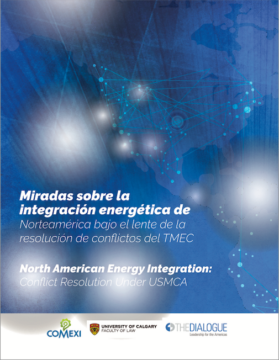
North American Energy Integration: Conflict Resolution Under USMCA
This report, written in collaboration with COMEXI and the University of Calgary explores what routes to de-escalation exist under the US-Canada-Mexico energy dispute resolution talks.
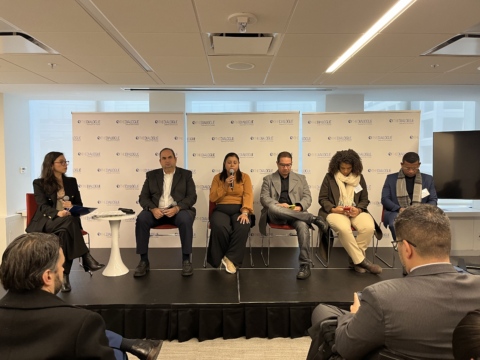 Video
Video
La agenda ambiental y climática en Colombia: autoridades locales hablan
Colombia ha sido ejemplar en la apuesta por una transformación económica verde. Para reconocer sus esfuerzos y escuchar más sobre los retos y logros de la agenda ambiental local en Colombia, el Diálogo Interamericano reunió a cinco figuras locales para discutir sus planes y ambiciones.
Experts See all
Partners and Sponsors




































